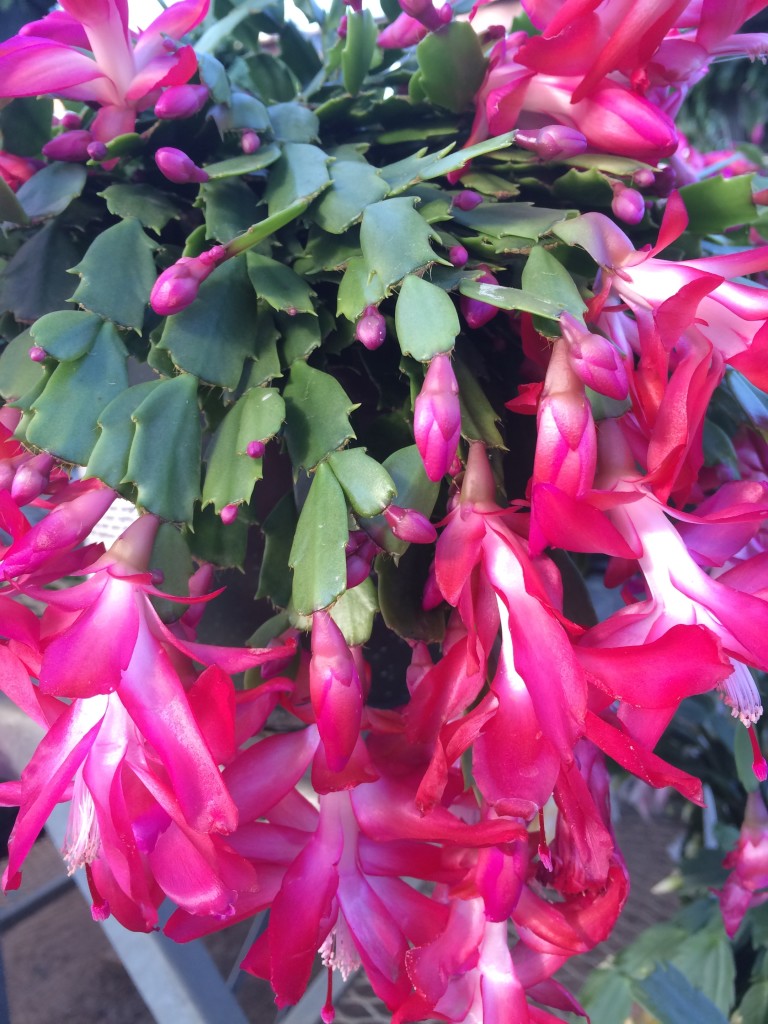

Holiday festivities just wouldn’t be the same without dazzling displays of the poinsettias and Christmas cacti, lighting homes with the colors of the season.
Last year, more than 34 million poinsettias were sold in the U.S. There are now more than 100 varieties of poinsettias in shades of pink, white, cream, salmon and purple, though the most sought-after color remains bright red.
While it appears in stores and nurseries in November and December, it is not a winter-hardy plant, but rather a tropical and a member of the vast euphorbia family. In its native Mexico and Central America, the poinsettia is actually a small tree, growing up to 12 feet tall with leaves 6 to 8 inches wide.
In the 14th century, the Aztecs prized this unique plant, using it to make dyes for clothing and makeup, and for medicine. Its botanical name, Euphorbia pulcherrima means “very beautiful,” and in Mexico, the plant is called ‘La Flor de Nochebuena’ or the flower of the holy night (Christmas eve).
Joel Roberts Poinsett, an amateur botanist and the first U.S. Minister to Mexico, appointed in 1825, is credited with introducing the plant to the U.S. As it gained in popularity here, the plant was eventually given a new name in honor of Poinsett.
In spite of the common myth, poinsettias are not poisonous, but they can make you sick and should be kept safely out of the reach of children and pets. The milky sap produced by poinsettias can cause skin reactions, irritations, nausea, and vomiting.
Though they are frequently thought of as blooms, the red leaves of the poinsettia are not actual blooms, but modified leaves called bracts. The actual blooms are the small yellow tips in the center of the bracts.
When selecting a plant, be sure to look for one with dark green foliage. Avoid plants with yellowing or drooping leaves or green around the bract edges. And don’t leave it outside if temperatures drop below 50F; they are very tender.
One of the most common questions about poinsettias is how to keep a poinsettia after the holidays and make it bloom again. Through the winter, place indoor plants in a sunny location and keep watering the plant when the surface soil is dry. They do not like to be too wet or too dry. They also dislike high heat or drafts; their ideal temperature range is 60-70 degrees. Use an all-purpose fertilizer every two to three weeks. In May, cut back the plant to about 8 inches from the base of the soil. Pinch it back just a little in mid-summer to encourage a full, bushy plant by winter.
The secret to producing red bracts and blooms again lies in keeping the plant in total darkness at night. To achieve the brilliant, characteristic red color, the plants must have 15 hours of darkness a day for approximately 10-12 weeks.
Starting in late September, an indoor plant should be moved into a dark closet or placed under a cardboard box or black plastic bag at 5 p.m. every day. Remove it every morning at 8 a.m. It should receive 15 hours of total darkness daily. The blooms will only set if the plant experiences these shortened periods of light for at least 10 weeks’ time. If light can get in through cracks in the closet or fabric, it will delay the bud set. Kept on this schedule, by the first of December, yellow blooms and red bracts will appear and the plant can then be placed in a bright, sunny location
Many of the same elements of care hold true for the beautiful blooming Christmas cactus. If you’re buying one now, it’s likely already blooming or about to bloom. After the holidays are over, with the right prompting, you can enjoy its flowers again next winter, too.
The name Christmas cactus is deceiving. As a member of the genus Schlumbergera, it is a tropical plant — nothing like the arid-loving desert cactus. In its native habitat of Brazil, these plants grow on trees and among rocks and thrive in shade and humidity.
Just as with poinsettias, after the holidays, water the cactus on a wet to dry cycle – water only when the first inch of soil is dry. Prune the cactus in the spring when it begins to grow again.
In September, like poinsettias, they require 12-14 hours of total darkness at night in order to set buds in time for the holiday season. The optimum temperature for bloom formation during this time is between 60 and 65 degrees. Do not water the cactus in October; begin watering lightly again in November.
So, decorate with these festive plants this season, and consider enjoying them throughout the year. Next fall, you, yourself can nurture them into another season of beautiful blooms.
Local Landscape Designer and Garden Coach Diana Kirby provides landscaping tips at http:/www.dianasdesignsaustin.com and writes a garden blog at https://www.dianasdesignsaustin.com

